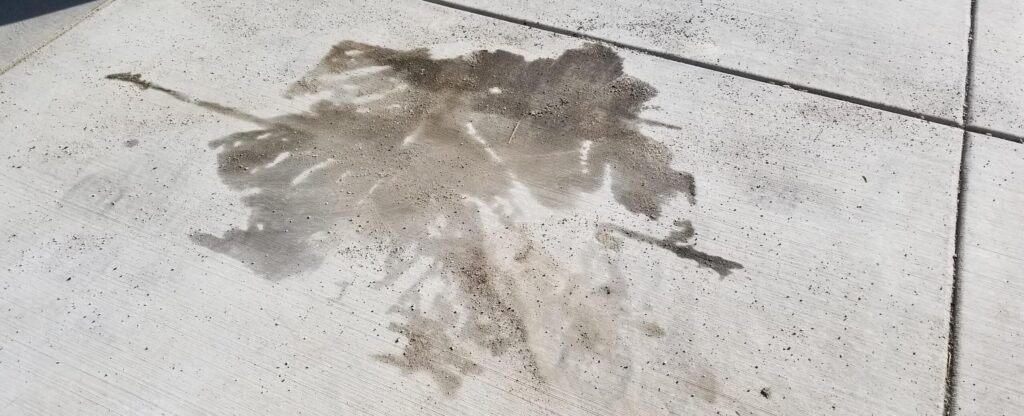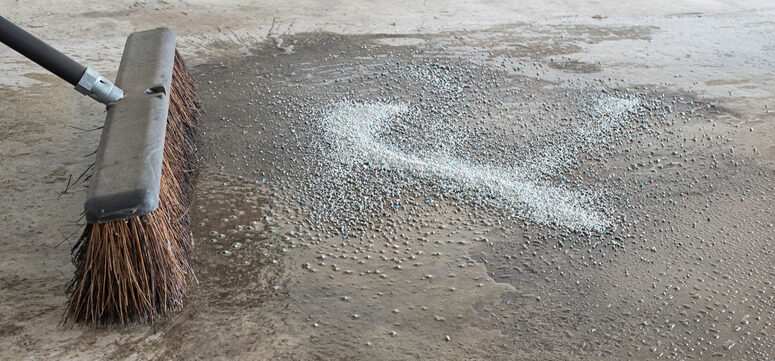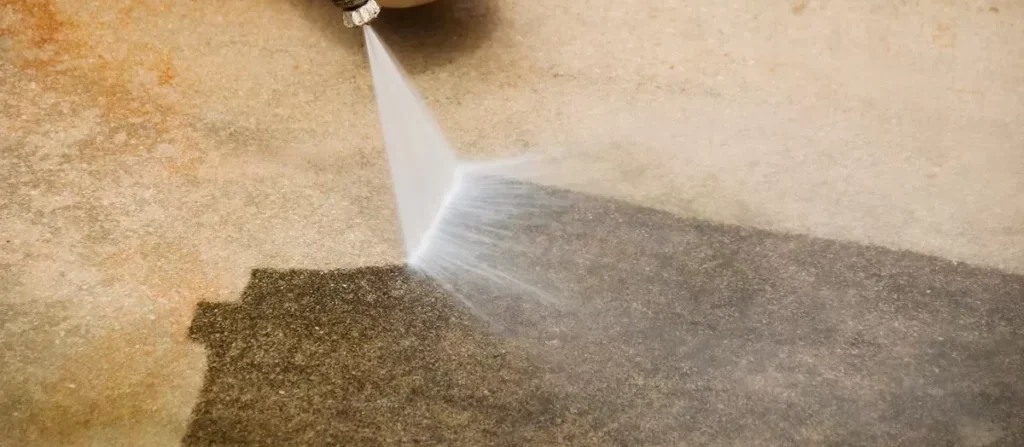The Unsightly Problem of Oil Stains
Concrete surfaces are the silent workhorses of our properties. From driveways and garage floors to outdoor patios and workshop areas, these surfaces endure constant use and abuse. Among the most challenging and persistent issues homeowners and property managers face are oil stains – those stubborn, dark patches that seem to sink deep into the concrete, defying traditional cleaning methods and marring the appearance of otherwise pristine surfaces.

Oil stains are more than just an aesthetic nuisance. They represent a complex interaction between a porous surface and a persistent, penetrating substance. Concrete, despite its seemingly solid appearance, is actually a highly porous material. Its microscopic network of tiny channels and capillaries acts like a sponge, readily absorbing oils, grease, and other liquids. This characteristic makes oil stains particularly challenging to remove, especially as time passes and the oil sets deeper into the concrete’s structure.
The Science Behind Oil Stains
To truly understand how to combat oil stains, it’s essential to comprehend their fundamental nature. Motor oils, transmission fluids, cooking oils, and other petroleum-based substances contain complex hydrocarbon molecules that easily seep into concrete’s porous structure. These molecules are hydrophobic, meaning they repel water, which is why traditional water-based cleaning methods often prove ineffective.
The longer an oil stain remains untreated, the more difficult it becomes to remove. Fresh spills are significantly easier to address, as the oil has not yet fully penetrated the concrete’s deeper layers. Older stains, which may have been present for weeks, months, or even years, require more aggressive and sophisticated removal techniques.
Immediate Action: Dealing with Fresh Oil Spills
When an oil spill first occurs, time is of the absolute essence. The first few moments after a spill are critical in preventing a long-term staining problem. Immediate absorption is your primary strategy. Professional cleaners and automotive experts recommend using highly absorbent materials that can quickly draw out the oil before it penetrates too deeply.
Kitty litter, for instance, is not just for cat owners – it’s a remarkably effective first-line defense against oil stains. The clay-based material is incredibly absorbent and can quickly soak up fresh spills. Other excellent absorbent materials include agricultural lime, cornstarch, and specialized commercial oil-absorption products. These materials work by creating a capillary action that pulls the oil away from the concrete surface, preventing deeper penetration.
1. Blot the Spill Immediately
Time is critical when dealing with a fresh oil spill. Follow these steps:
- Use absorbent materials like kitty litter, cornstarch, or baking soda
- Generously spread the absorbent over the entire stained area
- Let it sit for 15-30 minutes to soak up excess oil
- Sweep or vacuum the absorbent material completely

2. Clean the Area Thoroughly
After removing excess oil:
- Mix dish soap or a specialized degreaser with warm water
- Use a stiff-bristled brush to scrub the stained area
- Work the cleaning solution into the concrete in circular motions
- Pay extra attention to deeply stained spots
3. Rinse and Repeat
- Rinse the area completely with clean water
- If the stain persists, repeat the cleaning process
- Consider using a pressure washer for more thorough cleaning
Addressing Older, Set-In Stains
Older oil stains require more advanced intervention. Commercial oil stain removers designed specifically for concrete can be incredibly effective. These products often contain powerful solvents and surfactants that can break down and lift even years-old oil stains.
The poultice method represents another advanced technique for stubborn stains. This approach involves creating a thick paste using absorbent materials like diatomaceous earth, hydrated lime, or powdered clay, mixed with a powerful solvent such as acetone or mineral spirits. When applied to a stain and covered with plastic wrap, this poultice can draw out deeply embedded oil over 24-48 hours.
DIY Poultice Method
- Create a paste using absorbent materials like:
- Baking soda
- Hydrated lime
- Powdered laundry detergent
- Mix with a solvent like acetone or mineral spirits
- Apply a thick layer over the stain (about 1/4 to 1/2 inch thick)
- Cover with plastic wrap and let sit for 24-48 hours
- Remove and rinse thoroughly
Specialized Approaches for Different Concrete Surfaces
Driveways: A Unique Challenge
Driveways face constant exposure to potential oil contamination. Vehicles regularly leak small amounts of various oils and fluids, making prevention and quick intervention crucial. Consider implementing preventative measures such as placing absorbent mats under parked vehicles or regularly sealing your concrete surface to create a protective barrier.
Garage Floors: Industrial-Strength Solutions
Garage floors often require more robust cleaning methods. Industrial-grade degreasers and pressure washing can be effective for larger or more persistent stains. Professional-strength cleaning solutions designed for automotive workshops can provide the extra power needed to tackle tough garage floor oil stains.

Prevention: The Best Long-Term Strategy
While removal techniques are crucial, preventing oil stains represents the most effective long-term approach. Regular concrete sealing creates a protective layer that makes future oil removal significantly easier. These sealants work by filling the concrete’s microscopic pores, creating a barrier that prevents oils from penetrating deeply.
Implement practical prevention strategies such as:
- Using drip pans under vehicles
- Quickly addressing any spills with appropriate absorbent materials
- Applying high-quality concrete sealants annually
- Creating designated parking areas with additional protective measures
When to Seek Professional Help
Despite the comprehensive techniques outlined here, some oil stains might prove exceptionally challenging. Extensive, old, or deeply penetrated stains might require professional intervention. Concrete restoration experts possess specialized equipment and industrial-strength cleaning solutions that can address stains beyond typical home remedies.
Conclusion: Persistence and Knowledge Are Key
Removing oil stains from concrete is a process that demands patience, the right techniques, and a systematic approach. By understanding the nature of oil stains, acting quickly, and employing appropriate cleaning methods, you can effectively restore your concrete surfaces.
Remember, each stain is unique, and what works for one might require slight modification for another. Don’t be discouraged if your first attempt isn’t completely successful. Persistence, combined with the knowledge you’ve gained here, will help you maintain clean, attractive concrete surfaces.
If you spilled oil on an item of clothing, check out this blog to read about how to get those stains out.
Have you battled stubborn oil stains? We’d love to hear about your experiences and any unique methods you’ve discovered. Share your stories in the comments below!